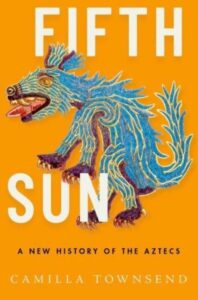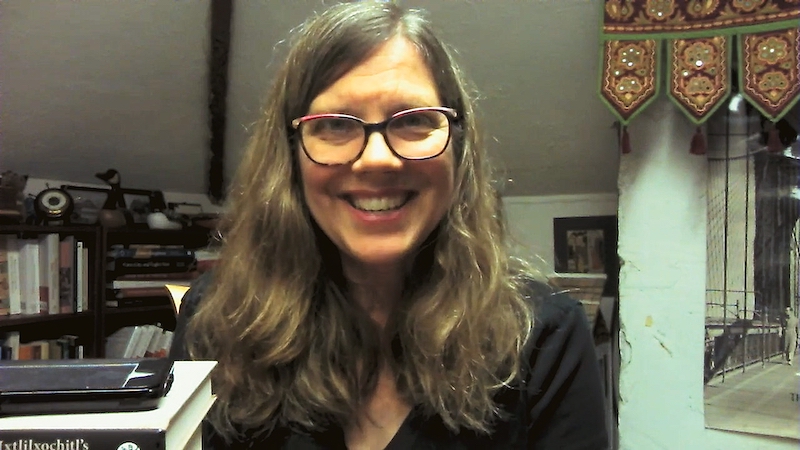Exactly five hundred years ago, the Aztecs were locked in a monumental struggle for their civilization’s survival with the newly arrived Spanish conquistadors.
Years later, Bernal Díaz, one of Hernando Cortés’ men, recalled his first impression of the Aztec cities with awe:
These great towns and cues [pyramids] and buildings rising from the water, all made of stone, seemed like an enchanted vision… Some of our soldiers asked if it were not all a dream.
But then regretfully he writes:
Today all that I then saw is overthrown and destroyed; nothing is left standing.

The civilization Bernal Díaz remembered was not all a dream. The Aztec’s capital, an island city in a lake, on the site of today’s Mexico City, was as sophisticated as any in Europe, a place with politics, military alliances, arts, administration; with gardens, markets, libraries, a palace and those pyramidal temples that so impressed Díaz.
But of course, as we know, the Aztecs practised human sacrifice in those temples, a fact that so predominates in popular impressions of them that almost everything else about them is cast in its shadow.
Yet as my guest in this programme, Camilla Townsend, writes in her latest book, Fifth Sun: A New History of the Aztecs:
The Aztecs would never recognize themselves in the picture of their world that exists in the books and movies we have made. They thought of them- selves as humble people who had made the best of a bad situation and who had shown bravery and thus reaped its rewards.
History Today, reviewing the book, said simply:
Everything you thought you knew about the Aztecs is wrong.

Camilla’s book is about the trauma of conquest, but it is also about survival and continuity—about how the Aztecs saw and understood themselves. The Spanish conquest is neither introduction nor climax. But it is the pivot.
To gain an understanding of the Aztecs, Camilla, who’s a professor of history at Rutgers, immersed herself for years in their language, Nahuatl. And language, I suggested when we spoke, is central to her whole story.
